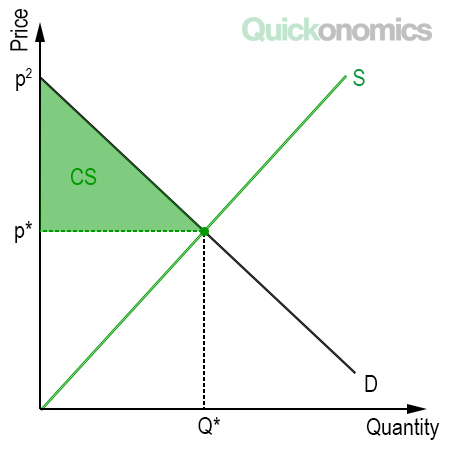Updated Jul 28, 2019 Consumer surplus is defined as a buyer’s willingness to pay minus the amount they end up paying. That means it measures the additional benefit consumers receive when they have to pay less than they were willing to pay because the actual price of the good or service is lower than their willingness to pay. Thus, when the price of a good or service falls, consumer surplus always increases and vice versa. In addition to that, it can be calculated on either an individual or an aggregate level. Let’s say you have two friends, Anna and Robert. Although they both like hamburgers, their individual willingness to pay for a burger is different. While Anna is willing to pay up to USD 5.00, Robert is ready to buy a burger for up to USD 8.00. Now, let’s assume that the current market price of a hamburger is USD 4.00. In that case, Anna ends up paying USD 1.00 less than her willingness to pay (i.e., 5.00 – 4.00). Thus, her individual consumer benefit is USD 1.00. Similarly, Robert pays USD 4.00 less than what he was willing to pay (i.e., 8.00 – 4.00). So his benefit is USD 4.00. On an aggregate level, we can illustrate consumer surplus in a supply-and-demand diagram (see below). The green triangle below the demand curve and above the market price represents the total consumer benefit. For a more detailed explanation, make sure to check out our article on how to calculate consumer surplus. Consumer surplus plays an important role for consumers when it comes to purchasing decisions. It helps them compare different options and maximize their individual benefit. Meanwhile, profit-maximizing firms also consider this concept for pricing decisions. More specifically, they will try to turn as much of the consumers’ benefits into producer surplus as they can. If they can identify their customers’ willingness to pay, this can lead to higher prices and different forms of price discrimination.Definition of Consumer Surplus
Example

Why Consumer Surplus Matters
Economics